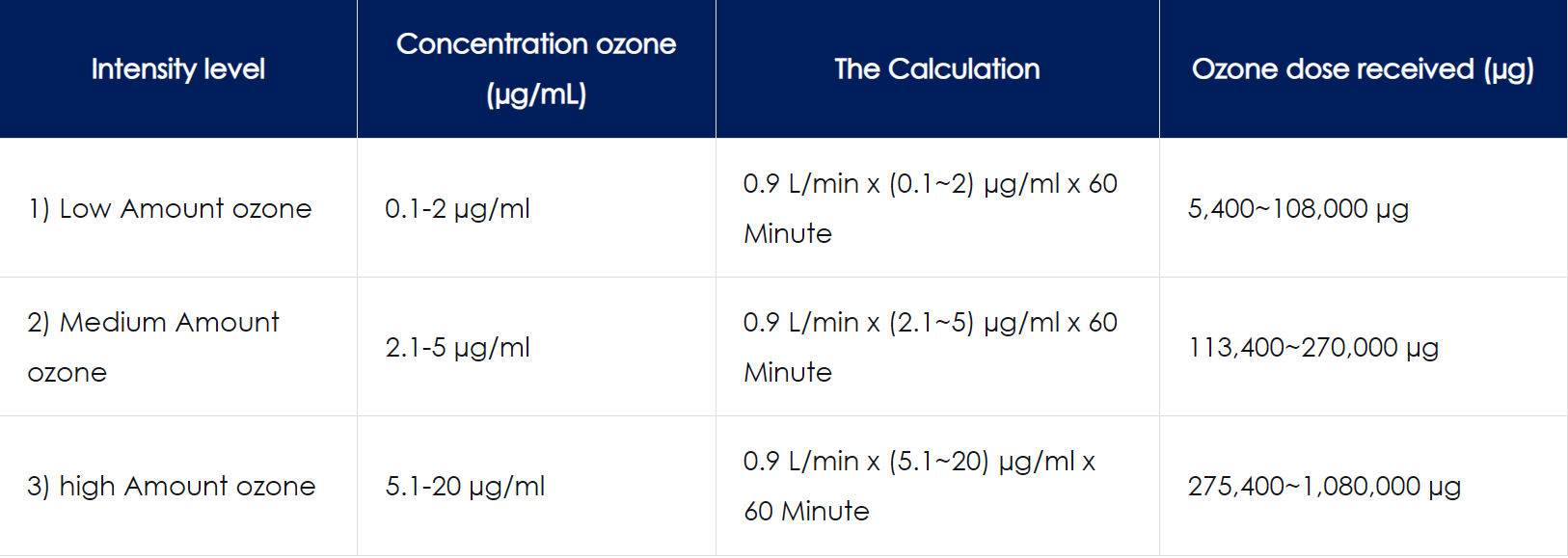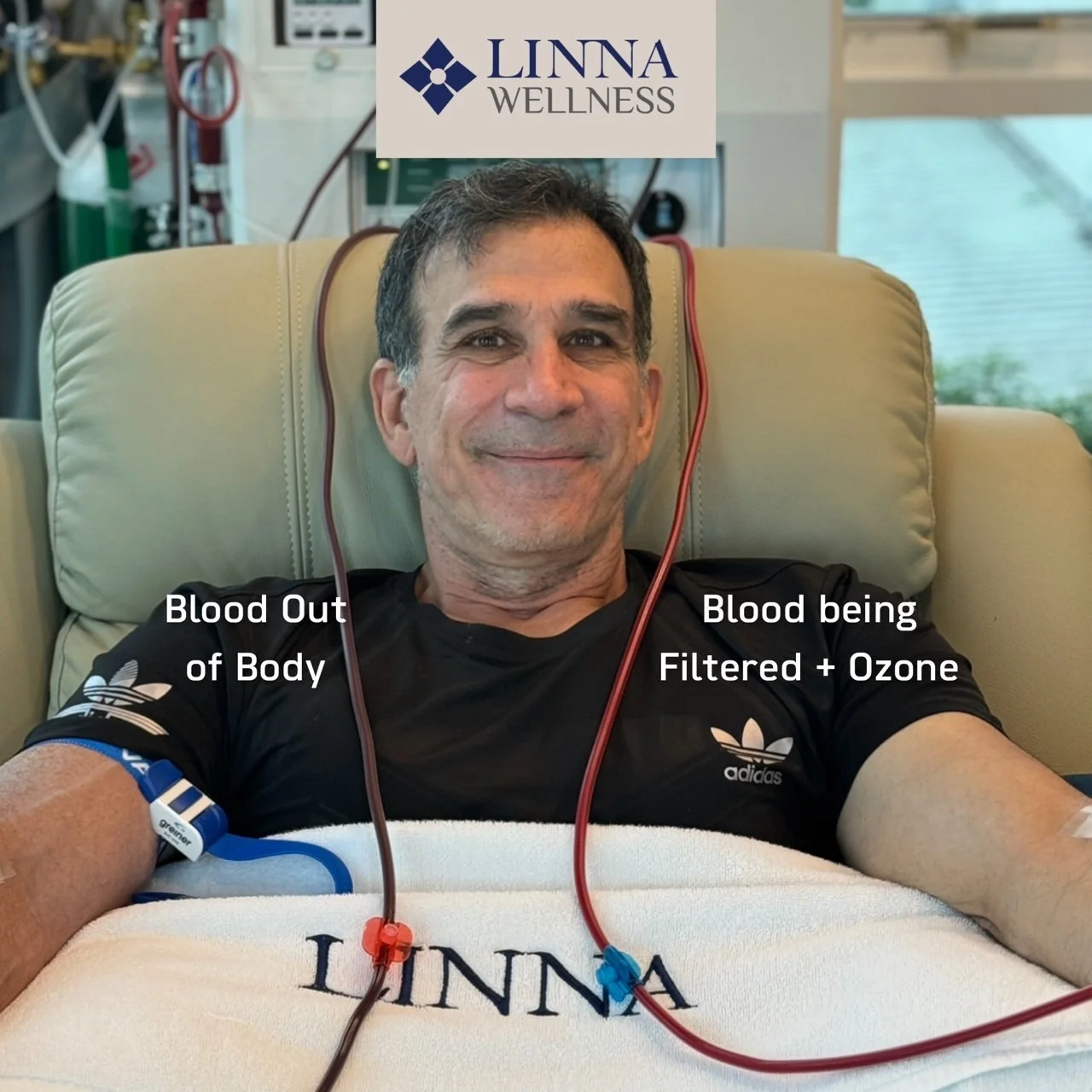In an era where healthcare is a top priority, innovative treatments like Ozone Therapy have gained widespread attention for their ability to rejuvenate the body from within. With a variety of techniques such as Direct Intravenous Ozone, Major Autohemotherapy, Hyperbaric Ozone Therapy and EBOO Therapy, there are options to cater to both patients and those seeking preventive healthcare. This article from LINNA Clinic compiles essential information about ozone therapy, compares the strengths of each technique and reveals why EBOO Therapy is recognized as a highly safe and effective method. Additionally, it includes review of the blood of patients who have undergone Ozone Therapy using the EBOO Technique at LINNA Clinic.
Table of Contents
How many types of ozone therapy are there?
Ozone therapy has evolved into various forms, each with its unique characteristics and applications. Here’s a breakdown of the primary techniques:
- Direct Intravenous Ozone (DIV): This method involves directly injecting a mixture of oxygen and ozone (at a concentration of 30 µg/ml) into a vein. While DIV offers rapid body rejuvenation, it carries a higher risk due to the high ozone concentration used.
- Major Autohemotherapy (MAH): In this technique, approximately 200 ml of blood is drawn from the body, mixed with high-concentration ozone (20-50 µg/ml) in a blood bag, and then returned to the body.
- Hyperbaric Ozone Therapy (HBO3): HBO3 involves the use of high levels of ozone. A small amount of blood (approximately 200 ml) is drawn, mixed with ozone (20-70 µg/ml), and returned to the body. This process can be repeated up to 10 times in a single session, hence the term that is used is “10-Pass Ozone Therapy.” This technique stimulates blood cells and the immune system, making it suitable for short-term immune boosting and detoxification. However, individuals undergoing HBO3 therapy must have strong veins to withstand multiple blood draws in a session.
- EBOO Therapy (Extracorporeal Blood Oxygenation and Ozonation): EBOO involves continuously infusing of ozone into the bloodstream for 45-60 minutes using a low concentration of ozone (0.1-20 µg/ml depending on each patient), significantly reducing the risk of ozone toxicity. Additionally, this technique incorporates real-time monitoring of red blood cell characteristics, allowing medical professionals to immediately stop the treatment if any abnormalities are detected. Furthermore, EBOO can also filter waste products from the blood. Therefore, make your blood clean.
Comparing Hyperbaric High Dose (10-Pass) Ozone Therapy and EBOO Therapy
1. Hyperbaric Ozone Therapy (10-pass Ozone Therapy)
- How it works: This therapy involves using high concentrations of ozone. Approximately 200 ml of blood is drawn from the body, mixed with ozone at a concentration of 20-70 µg/ml, and then returned to the body. This process can be repeated up to 10 times per session, hence the term ’10 Pass Ozone Therapy.’
- The maximum ozone dose received is 14,000 micrograms when the procedure is repeated 10 times per session.
- Advantages: High-dose treatment: This method delivers a high amount of ozone to the body, making it effective for quickly boosting the immune system. Rapid recovery: It’s suitable for those seeking rapid recovery from severe illnesses or injuries. Detoxification and immune stimulation: The treatment helps to eliminate toxins and stimulate the immune system efficiently.
- Considerations: High-risk of side effects: Directly injecting high concentrations of ozone can lead to side effects such as blood vessel irritation, blood vessel damage, and ozone toxicity. Unpredictable blood cell damage: It’s impossible to know when red blood cells might rupture during the treatment. Requires medical supervision: This procedure should only be performed under the care of a qualified medical professional.
2. EBOO Therapy (Extracorporeal Blood Oxygenation and Ozonation)
- How it works: Blood is drawn from a vein and passed through a sterile filter to remove waste products and toxins. Then, pure ozone at a concentration of approximately 0.1-20 µg/ml is added to the blood using an ozone generator. The treated blood is then slowly returned to the body through a vein in the other arm.
- Ozone dosage: The amount of ozone received can be calculated based on กblood flow rate (mL/min) the concentration of ozone used, and the treatment duration (60 minutes) Ozone concentration for treatment is divided into three levels:

| Intensity level | Concentration ozone (µg/mL) | The Calculation | Ozone dose received (µg) |
|---|---|---|---|
| 1) Low Amount ozone | 0.1-2 µg/ml | 0.9 L/min x (0.1~2) µg/ml x 60 Minute | 5,400~108,000 µg |
| 2) Medium Amount ozone | 2.1-5 µg/ml | 0.9 L/min x (2.1~5) µg/ml x 60 Minute | 113,400~270,000 µg |
| 3) high Amount ozone | 5.1-20 µg/ml | 0.9 L/min x (5.1~20) µg/ml x 60 Minute | 275,400~1,080,000 µg |
The specific concentration of ozone and blood flow rate used for each individual differ and must be determined by the treating physician.
- Advantages: Continuous low-dose ozone: Research supports that EBOO Therapy’s continuous low-dose ozone administration enhances oxygen binding to red blood cells, increasing oxygen supply to cells. Personalized treatment: Low-dose ozone allows for precise control, tailoring treatment to individual needs and reducing the risk of ozone toxicity. Safe for various conditions: Even individuals with certain blood disorders, such as thalassemia or G6PD deficiency, can undergo this treatment, although consultation with a specialized physician is recommended. Additional benefits: The machine’s built-in blood filtration system and red blood cell monitoring enhance treatment efficacy and safety.
- Considerations: Treatment duration: Sessions typically last 45-60 minutes. Specialized expertise: Requires highly skilled medical professionals. Higher cost: Compared to other ozone therapy methods, EBOO Therapy is generally more expensive.
Why EBOO Therapy is Better and Safer Than Other Techniques
- Lower ozone concentration and reduced risks: EBOO Therapy uses a continuous, low-dose ozone infusion (0.1-20 µg/ml), significantly reducing the risk of ozone toxicity and red blood cell damage. Research has shown that EBOO effectively increases oxygen levels and boosts the immune system, making it suitable for individuals with fragile blood cells like those with thalassemia or G6PD deficiency.
- Simultaneous blood filtration: The integrated blood filtration system removes waste and toxins while infusing ozone, enhancing overall body rejuvenation.
- Real-time monitoring: Real-time red blood cell monitoring allows for immediate intervention if any abnormalities are detected, ensuring patient safety.
- Advanced technology: LINNA Clinic’s EBOO Therapy utilizes state-of-the-art equipment, including motors, ozone generators and filters from technologically advanced countries like the United States, Russia and Japan. This ensures precise and stable ozone delivery, enhancing treatment efficacy and safety.

How EBOO Therapy Varies Between Service Providers?
While the core principles of EBOO Therapy are consistent across different facilities, subtle variations in technology, provider experience, and attention to detail can significantly impact treatment efficacy and safety. These differences include:
- Blood pressure regulation techniques: Maintaining stable blood pressure during EBOO Therapy is crucial. High-quality facilities use equipment capable of precise and delicate blood pressure adjustments, ensuring optimal treatment outcomes.
- Customized ozone and gas flow rates: The specific ozone concentration and gas flow rate are tailored to individual patient needs. Chronic conditions, high blood pressure, or fragile red blood cells require customized settings to minimize risks and maximize benefits.
- Physician expertise and experience: The skill and experience of the treating physician are paramount. A qualified professional can accurately assess a patient’s health, determine optimal treatment parameters, and monitor the procedure closely.
- Sterilization and hygiene: Rigorous sterilization protocols are essential to prevent infections. Patients should choose facilities that adhere to strict hygiene standards and highly experience provider.
Why is low-dose ozone therapy better than high-dose ozone therapy?
- Reduced risk of toxicity: Lower ozone doses minimize the risk of damaging red blood cells or causing systemic oxidative stress.
- Long-term safety: Regular, low-dose treatments are generally well-tolerated and can be safely repeated without adverse effects.
- Suitable for vulnerable populations: Individuals with chronic conditions, such as thalassemia, G6PD deficiency, or diabetes, can benefit from low-dose ozone therapy.
How to measure results after EBOO Therapy
Post-EBOO Therapy blood test results often reveal improvements such as increased blood oxygen levels and decreased inflammation compared to pre-treatment results. Or some have their blood test done before doing EBOO Therapy and after 3-5 times, they experinced an improvement on their blood test after serveral EBOO Therapy. Apart from that patients commonly report feeling more refreshed, less fatigued and experiencing improved sleep quality. Moreover, consistent EBOO Therapy can alleviate symptoms of chronic conditions like hypertension, diabetes, and cardiovascular diseases, allowing patients to resume normal daily activities and potentially reduce medication reliance in most cases.
Who is EBOO Therapy Suitable For?
- Individuals experiencing chronic fatigue.
- Those recovering from severe illnesses, including post-COVID-19 recovery.
- Patients with chronic diseases such as diabetes, hypertension, cardiovascular diseases, autoimmune disorders, allergies and asthma.
- Individuals with fragile red blood cells like those with thalassemia or G6PD deficiency.
- People with sexual dysfunction.
- Those seeking to boost their immune system for overall health.
- Healthy individuals aiming for preventive healthcare
LINNA Clinic's EBOO Therapy Reviews
At LINNA Clinic, we offer ozone therapy using the advanced EBOO PLUS Technique, carefully supervised by doctors with over 13 years of experience and more than 30,000 real treatment cases.
This ozone therapy program is suitable for everyone — whether you are healthy and wish to maintain your well-being, or you have chronic conditions such as high blood pressure, diabetes, or cardiovascular disease. It is also beneficial for individuals experiencing chronic fatigue and those who wish to restore their health after illness, such as recovering from COVID-19 or managing post-vaccination side effects.
If you are interested, please feel free to book an appointment or consult with us at 063-609-8888 or via LINE: @linnaclinic.




